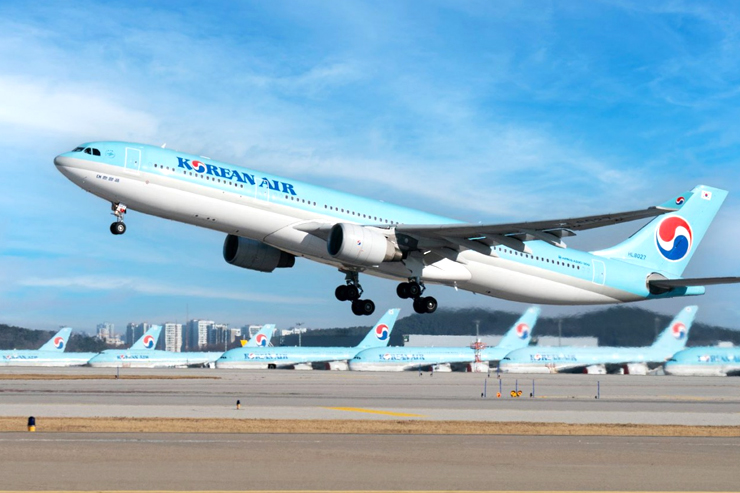Korean Air: Soaring to New Heights in Q2 2022

In the aviation industry, Korean Air is proving to be a beacon of hope and resilience as it reports impressive financial results for the second fiscal quarter of 2022. With revenue reaching KRW 3.3324 trillion (approximately US$ 2.5775 billion) and an operating profit of KRW 735.9 billion (around USD 569.2 million), the airline is not only staying afloat but ascending to new heights despite ongoing challenges.
Amidst the backdrop of persistently high oil prices and volatile exchange rates, Korean Air’s remarkable performance can be attributed to several factors that have propelled it forward. Chief among them is the steady resurgence in passenger demand and robust cargo demand, both of which have contributed to significant year-on-year improvements.
One standout achievement is Korean Air’s passenger revenue for the second quarter, which reached an impressive KRW 874.2 billion, marking a substantial 307 percent increase compared to the same period the previous year. This surge in travel demand can be attributed to the declining number of COVID-19 cases and the gradual reopening of borders, signaling the world’s eagerness to return to the skies.
Korean Air’s cargo division has also played a pivotal role in its financial success, with cargo revenue reaching KRW 2.1712 trillion, reflecting a remarkable 44 percent year-on-year increase. This surge in cargo demand comes amidst global disruptions caused by the prolonged conflict in Ukraine and ongoing lockdowns in China. Despite these challenges, Korean Air successfully capitalized on opportunities to transport high-demand emergency relief supplies, automobile parts, semiconductors, and electronics, effectively maximizing profits.
While the outlook remains positive, Korean Air acknowledges that the path to full recovery may be longer than initially anticipated, particularly in the second half of the year. External factors, including the lingering impact of the pandemic and fluctuating oil prices, continue to influence passenger traffic. However, the airline remains agile and prepared to adapt swiftly to changing conditions.
Korean Air’s strategy for the future involves gradually increasing passenger network capacity to 50 percent of pre-pandemic levels by September. This measured approach allows the airline to respond effectively to evolving demand while ensuring passenger safety and comfort. Additionally, with the resumption of passenger services, Korean Air plans to secure additional air cargo capacity by utilizing belly cargo space in its passenger fleet. This strategic move aims to optimize profitability by aligning cargo transportation with passenger services based on regional demand and capacity fluctuations.
A promising trend highlighted by Korean Air is the gradual recovery in mid and long-haul routes, with the United States and Europe leading the way. This recovery is a testament to the resilience of global travel demand and bodes well for the airline’s future prospects.
Korean Air’s remarkable resilience throughout the pandemic can be attributed to several key factors. Firstly, the airline possessed one of the largest cargo businesses among passenger carriers before the pandemic, with cargo accounting for a significant portion of its total revenue. During the pandemic, this share surged to over 80 percent, allowing Korean Air to pivot more flexibly than many of its peers.
Furthermore, Korean Air benefits from the support of its parent company, Hanjin Group, one of the world’s leading logistics providers. This strategic advantage has further solidified Korean Air’s position in the air cargo business sector.
As Korean Air continues to navigate the challenges and opportunities of the aviation industry, its Q2 2022 results underscore its resilience, adaptability, and commitment to delivering exceptional service to passengers and cargo clients alike. In an era where the aviation industry faces unprecedented challenges, Korean Air’s success story serves as an inspiring example of determination and strategic agility.





